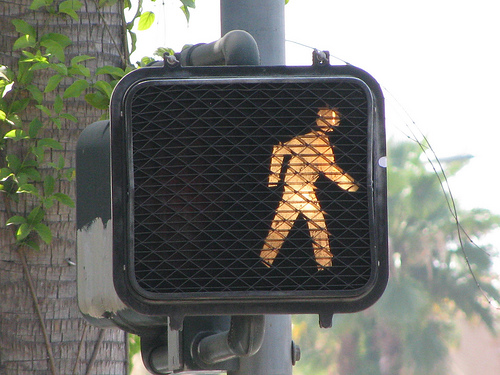 The Truth About … via flickrForget letting your fingers do the walking: A study released today shows that homebuyers are letting their wallets do the walking, paying more for homes in neighborhoods where you can get around without wheels.
The Truth About … via flickrForget letting your fingers do the walking: A study released today shows that homebuyers are letting their wallets do the walking, paying more for homes in neighborhoods where you can get around without wheels.
Conducted by CEOs for Cities, the analysis looked at 94,000 real-estate transaction in 15 markets across the U.S., from Fresno, Calif., to Arlington, Va. Researchers found that in 13 of the markets, housing values were higher in more walkable neighborhoods. (What about the other two markets? In Bakersfield, Calif., no correlation was found; in the other, which starts with Las Vegas and rhymes with Armageddon, housing values were lower in walkable neighborhoods.)
Using data from Walk Score, the study found that houses in hoods with above average walkability commanded $4,000 to $34,000 more than those in hoods with average walkability. Characterized as the first to put a dollar value on walkability, the study could be big news for municipal leaders and mere mortals alike, said CEOs for Cities head Carol Coletta: “These findings … tell us that if urban leaders are intentional about developing and redeveloping their cities to make them more walkable, it will not only enhance the local tax base but will also contribute to individual wealth by increasing the value of what is, for most people, their biggest asset.”
But wait, you’re saying (as one staffer did at our news meeting this morning): Couldn’t this connection just be due to the fact that walkable areas tend to be metro areas, and that makes them more expensive in general? The smarties behind the study are all over that:
Using an economic technique called hedonic regression, we estimate how much market value homebuyers implicitly attach to houses with higher Walk Scores … Our statistical approach controlled for key characteristics of individual housing units (their size, number of bedrooms and bathrooms, age and other factors), as well as for the neighborhoods in which they were located (including the neighborhood’s income level, proximity to the urban center and relative accessibility to employment opportunities). After controlling for all of these other factors that are known to influence housing value, our study showed a positive correlation between walkability and housing prices in 13 of the 15 housing markets we studied.”
They had me at hedonic regression.
For me, the question is: Should we have to pay more for the privilege of being able to walk to a grocery store or school or post office or local pub? Walking — which the study terms a “largely unmeasured and grossly under appreciated component of the urban transportation system” — is good for our health and good for the planet, not to mention good for things like car-insurance premiums. Should such a set-up be available only to those who can afford it? Our old friend Clark Williams-Derry over at Sightline offers this take:
What the CEOs for Cities study shows is that there is a real and measurable pent up demand for homes in walkable neighborhoods. For decades, sprawl apologists have argued that low-density suburban development was somehow “natural,” because it’s what homebuyers “prefer.” By now, though, it’s clear that many homebuyers are willing to pay a premium for walkability. The real problem is that the demand for walkable homes exceeds the supply — which pushes up the price.
To me, that argues for policies that are designed to increase the supply of homes in walkable neighborhoods. That’s good for affordability, good for reducing transportation costs, and a great way to help more people add walking to their daily routines.



